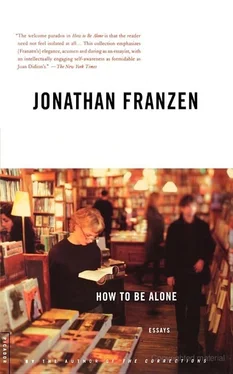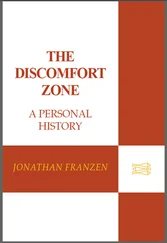Over the years, Doyle had come to expect poor service from the Uptown station, which served her neighborhood. Two-and three-day hiatuses in delivery no longer surprised her. But an entire week without mail, even a very cold week in January, seemed extreme. On the telephone, the station manager, Thomas Nichols, explained to Doyle that his carriers could not deliver the mail because their trucks wouldn’t start. He said that if Doyle wanted her mail she would have to get it from him at the station. Perhaps Nichols didn’t think that Doyle would actually venture out in the subzero weather, but after speaking to him she went straight to her car.
The population served by Chicago’s Uptown station is, in its diversity, practically an encyclopedia of contemporary American city dwellers. Professionals and retirees live in high-rises and large houses near Lake Michigan, transients and drug addicts come and go on Lawrence and Bryn Mawr Avenues, and on either side of the El tracks Asian and Eastern European immigrants share alleys with lifelong middle-class Chicagoans like Doyle. For years, the one thing all these people had in common was the 60640 zip code — that, and the unpleasant experience that was in store for them whenever they had to visit the Uptown station. The lobby smelled like a subway platform. The clerks seemed to have no pleasure in life but breaking for coffee at peak hours and hurling parcels marked “Fragile” at distant hampers. Customers budgeted an hour when they went to claim a package.
When she arrived at the station, Doyle asked to speak to Nichols. She was told that he was not in the building. Skeptical, she dialed the station’s number from the pay phone in the lobby. Nichols answered. What ensued was an archetypical Chicago scene: an angry postal customer confronting an evasive, unhelpful postal manager. Scenes like this ended, at best, with a promise of better service in the future; at worst, with the manager shouting obscenities at the customer.
On this particular afternoon, however, as Doyle and Nichols locked horns on the telephone, a tall, energetic woman strode into the Uptown lobby and asked if she could help. She introduced herself as Gayle Campbell. Doyle explained her problem, and Campbell disappeared into the back of the station. A few minutes later she returned with a week’s worth of Doyle’s mail. She also gave Doyle the numbers of her beeper and her home telephone, and urged her to call her if she had any more trouble with her delivery. Then she disappeared into the back of the station again.
The United States Postal Service, the country’s universal hard-copy delivery system, has a problem with big cities. Last winter, when Doyle met Campbell, eighty-eight percent of the nation’s households found their mail service “good,” “very good,” or “excellent,” but cities like New York and Washington had satisfaction indices in the mid-seventies, and Chicago, with a score of sixty-four percent, ranked dead last. More than a third of Chicagoans rated their service as “poor” or “fair,” and the discontent was even greater in the city’s crowded, affluent north-lakefront districts, where service had been execrable for a decade and consumer frustration had reached an intensity that seemed comic to those who didn’t share it.
A representative Chicago horror story, unusual only in its protraction, is that of Marilyn Katz, a media and political consultant. In 1986, Katz and her husband bought a ninety-year-old house on Magnolia Avenue, a stable, uncrowded neighborhood in the Uptown district. When they had lived there for three years, their mail abruptly stopped coming. Katz called the Uptown station four times, over a period of two weeks, before the station manager provided an explanation. The explanation was that Katz’s mail carrier had declared her house abandoned.
Service then resumed, but only fitfully. Katz’s mail came late, if it came at all, and often it was heavily seasoned with mail for other houses in her neighborhood. She engaged in especially lively trade with the 5500 block of Lakewood. Her homeowner’s insurance was canceled, and so was her health insurance; she had never received the bills. Before leaving on a ten-day vacation in August of 1990, she received notice that her phone service would be terminated for nonpayment. When she returned from vacation, her phone bills from May, June, July, and August were waiting for her. A few months later, she noticed that she had stopped getting The New Yorker . When she called the subscription service, she learned that the Uptown station had sent notification that she had moved away.
In the winter of 1992, Katz hand-delivered copies of a questionnaire on mail service to every household in a sixteen-block area of her neighborhood. The returns brought a litany of complaints similar to her own, plus fresh horrors. “Mailman drinks, erratic, hangs out with peculiar friends during delivery”; “Mailwoman delivers mail with her children and has children deliver the mail”; “Mailman harasses us at night, asks for money.”
Katz sent her survey results to the Chicago postmaster. Six months later, having received no reply, she began to work with her alderman, Mary Ann Smith, whose office had been processing postal complaints since 1988. Smith extracted a promise from Jimmie Mason, the new postmaster, to respond to Katz’s survey by October 2, but it was midwinter before Smith was able to arrange for Katz and her neighbors to meet with him. Mason asked them for their help in monitoring mail service. Katz said that she didn’t want to monitor the mail, she just wanted to get it. Mason said improvement would take time. In the interim, he promised to repaint Uptown’s corner mailboxes, which had been heavily tagged by local youth. He also offered to provide the community with its own blue paint to keep the boxes clean. To Katz, this seemed the ultimate in codependency: “Not only can we do delivery and monitoring for them. We can also paint.”
Although Mary Ann Smith continued to arrange “town meetings,” at which various postal officials made various promises, service in Uptown did not improve. Finally, last winter, after six years of steady agitation, Smith concluded that no force she could muster locally would compel the United States Postal Service to listen. She urged the City Council’s Committee on Finance to hold hearings on the economic impact of poor postal service, and then she gave up. “We’d done our part,” she says. “I’m not really supposed to spend my time on this.”
Katz, meanwhile, had turned over her important outgoing mail to Federal Express and had arranged for direct deposit of her checks. She made sure that all valuable documents were sent to her office downtown. Just as she avoided other universal public services by driving a car to work and sending her children to private school, she now bypassed the Postal Service, as much as possible, with her telephone, fax machine, and computer. She, too, had given up. “There was no accountability,” she says. “It was clear that the post office didn’t care.”
For Marilyn Katz and Mary Ann Smith and Debra Doyle — and for others as well, like U.S. Representative Sidney R. Yates of the Ninth District of Illinois, who had been criticizing Chicago postal operations for a decade — the most frustrating part of dealing with the post office was that nobody connected with it could explain why the mail was not being delivered. Katz occasionally heard excuses (for instance, the Uptown manager confided to her that postal workers’ unions prevented him from disciplining his carriers), but she never received even a token explanation of the failures that her survey had uncovered. Officials were cordial at town meetings and silent afterward. It was as if they not only didn’t care; they didn’t even know they had a problem.
Читать дальше
Конец ознакомительного отрывка
Купить книгу












